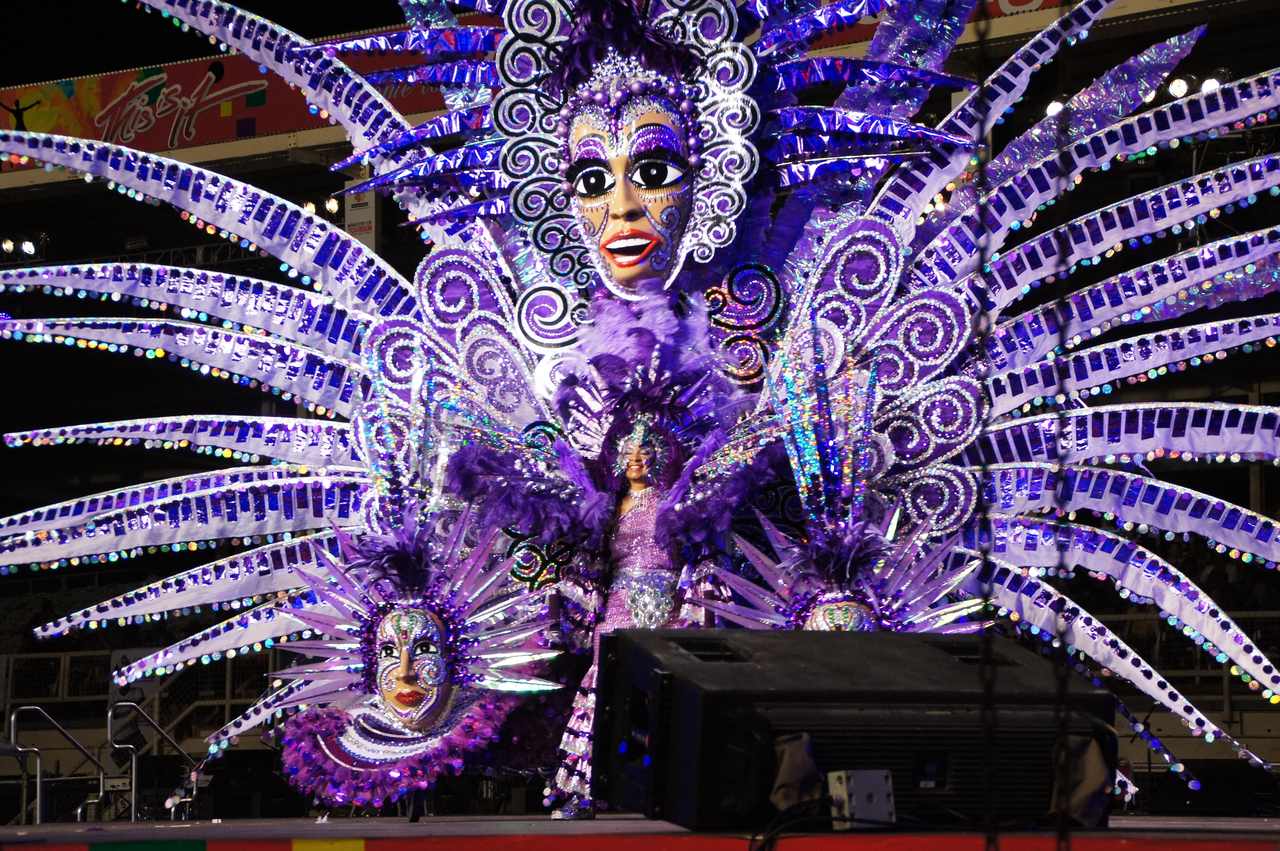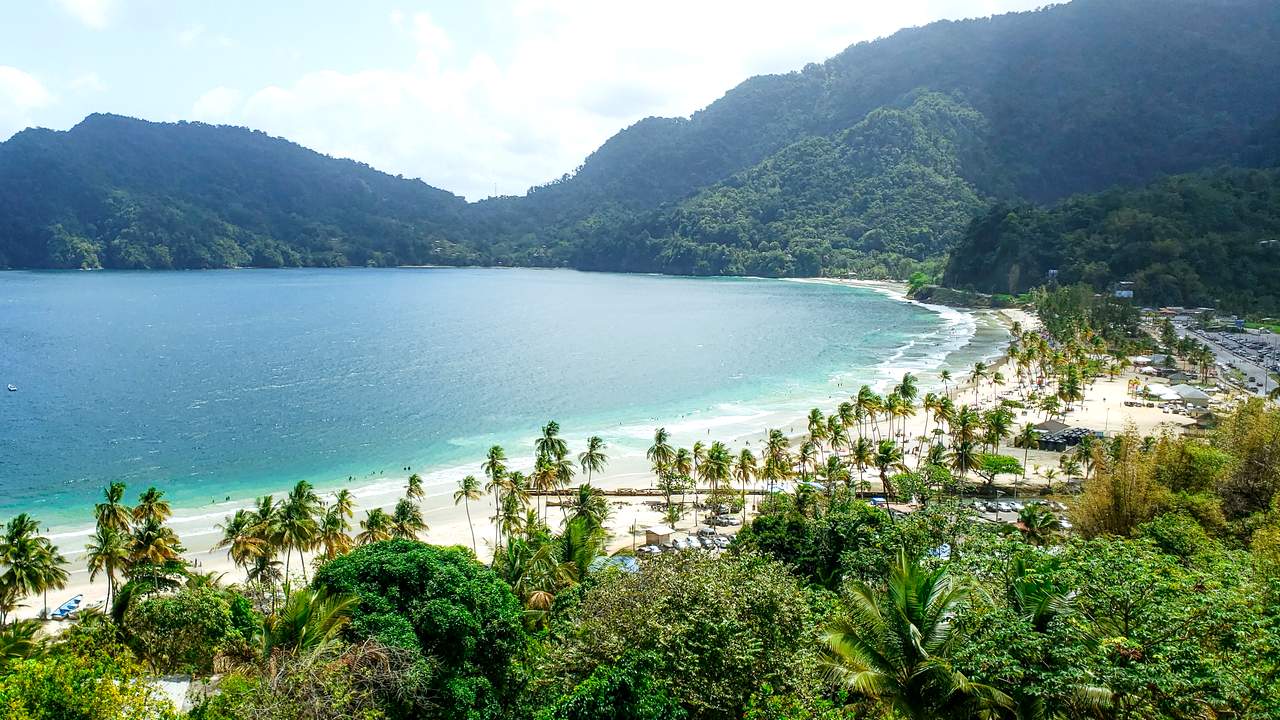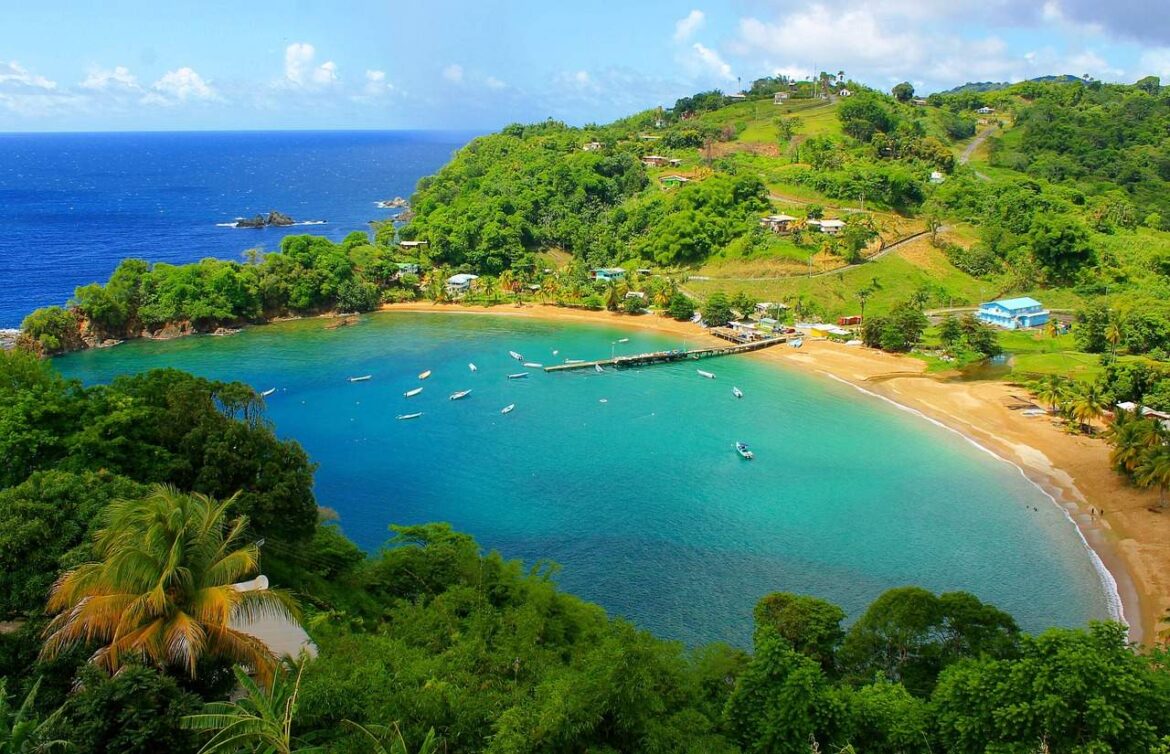The dual-island nation Caribbean islands of Trinidad and Tobago, separated by 30km of Caribbean waters, are located just east of Venezuela. They united in 1889, got their independence from Britain in 1962 and became a republic in 1976.
Tobago is the smaller, less industrial and more tourist-oriented one where holiday-makers enjoy fabulous beaches. By contrast Trinidad is where you can find savannas, tropical rainforests, a variety of marine life and bird species.
Nicknamed ‘The Land of the Hummingbird’, there are many sanctuaries in Trinidad to discover, such as the Asa Wright Nature Centre and Caroni Bird Sanctuary.
There’s plenty to discover all year around, since temperatures usually sit between 22 to 32℃, rarely dropping below 20℃. The climate is tropical with northeast trade winds to temper the oppressive heat and overcast skies are not atypical. So, when is the best time to go?
Trinidad
January-March: Cool, dry temperatures for Carnival
Winter is a popular time to visit Trinidad as the temperatures are cooler than the summer months, ranging from 21-31°C.

Carnival Trinidad
The dry period is perfect for the Trinidad Carnival, which is held on Monday and Tuesday before Ash Wednesday every year. However, this makes it a busy period, especially in the capital, Port of Spain, where the festival takes place.
Hotel prices may increase too, but if you want to experience a lively and vibrant celebration of freedom, with colourful costumes, when the flora is blooming then January, February (Carnival is 12th and 13th) and March is the time to go.
Visiting Yerettê, the home of the hummingbirds, would be an ideal activity while the weather is cool and dry. Located in Maracas Valley, northern Trinidad, you can spot fourteen species of hummingbird here. Admire the array of colours of the world’s smallest birds, as they flutter in the hundreds and thousands, year round.
April-May: Warm temperatures and the least rainfall.
Daily high temperatures are around 31°C, with strong heat and humidity – a great reason to stick around the many pristine beaches to cool off in the turquoise waters.
The quiet Blue Flag Las Cuevas Bay is popular however the nearby Maracas Bay is one of the buzziest beaches on the North Coast. From Port of Spain, it is an hour’s drive through idyllic mountains and it makes for a great lunch spot.

Maracas Bay c. Thruston Benny
Maracas Bay is probably the best place to try Taste Bake and Shark, a traditional Trinidadian cuisine and there are a few restaurants that specialise in this cuisine.
At night temperatures tend to fall to around 22°C and with the least rainfall during April to May, outdoor dining or a beach stroll will be pleasant.
June-December: Rainy Season
During the rainy season, hotel prices are lower and tourism is quieter. You can save money and enjoy Trinidad’s hotspots with less crowds. If you’re well prepared for short, intense bursts of downpours, exploring the nature on the island shouldn’t be a problem.
Canoeing through Nariva swamp, as it rains, could be fun for the adventurous spirits. It is the largest freshwater wetland in Trinidad and Tobago, covering over 60 square kilometres. It gained importance through its population of rare species, for example, the Red-bellied Macaw.
December is an excellent month to surf in Trinidad, especially if you will be getting wet anyway! The passing trade winds create consistent waves along the north and northeast coast. 4-8ft waves can be found at Las Cuevas, Grand Riviere, Blanchisseuse and Sans Souci.
September: Rainfall respite
September is the driest month of the wet season. It’s known as the ‘petit carêm’, a revitalising break from the dull weather.
Make the most of the lack of rain and wander around Queen’s Park Savannah. It is 260 acres of open space and the perimeter covers 2.2 miles, making it Port of Spain’s biggest open space. It is also the world’s largest roundabout and the centre stage for Trinidad Carnival and sporting events, such as cricket, football, and cycle races.
Tobago
January-March: Low humidity and nutrient-rich waters.
With little humidity and average temperatures sitting around 27°C, the beginning of the year is the best time to visit Tobago.
This is also the period in which the Tobago International Game Fishing Tournament (TIGFT) takes place since the water is most nutrient-rich. Fishermen, both amateur and professional, come from all over the world to catch big game fish in Charlotteville. It is claimed to be the event of the year on this island, with a fun and friendly atmosphere.
April-May: Dry Season
The ocean is warm from January, through Spring, usually in the high 20’s. It is also at its calmest from April to May, often described as resembling a mirror, due to its clear reflection.
These are the best months for scuba diving. You can find huge manta rays, turtles, black-tip reef sharks, nurse sharks, lobsters, eels and so much more. Visibility ranges from 5-30 metres at dive sites such as Flying Reef and MV Maverick.
Outside the ocean, this is Tobago’s driest season, with occasional light showers and highs of 31°C. At night the temperature cools to around 21°C, but you may still want to check that your hotel has air conditioning!
June – December: Wet and warm
Although Tobago is not on the hurricane belt, you can expect afternoon showers from June to December. It is still warm, with seven hours of sunshine every day in June, though. Don’t let the rain fool you from the high UV levels.
Explore the Main Ridge Forest Reserve, which encompasses 9780 acres of tropical rainforest or hike twenty minutes to Argyle Waterfall. Both ideal activities for cooling off, come rain or shine. For your best chances of avoiding downpours, getting out early is your safest bet.
Visiting Trinidad and Tobago in November is a good reason to witness the Diwali festival. A Hindu celebration of good over evil, light over dark. It symbolises the lifting of negative spirits, by lighting oil lamps all around the towns and cities of Trinidad and Tobago, as well as in other Hindu countries.
September: The hottest month
September can reach 29°C during the day and often only drops by one degree at night. The humidity is high too, making it feel even hotter.
While the skies are clear, check out Pigeon Point Heritage Park. Home of what is often described as one of the Caribbean’s most beautiful beaches, with electric blue waters and powder-white sands. The iconic thatched-roof jetty has become a symbol of Tobago and it is famous for providing stunning photos, especially for proposals and weddings.
Pigeon Point is very close to Tobago airport and you can easily take a day trip here from the capital city, Scarborough.

